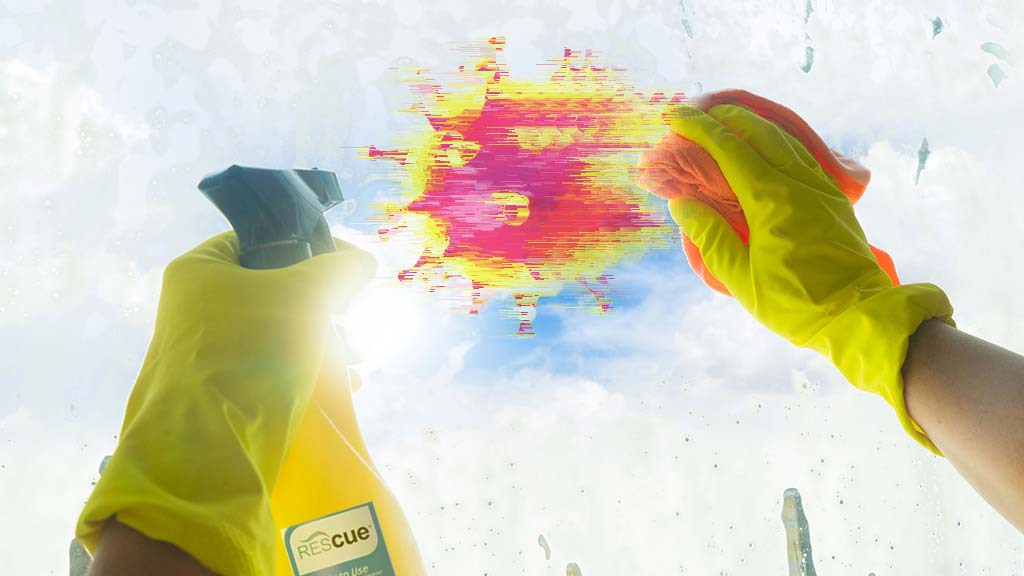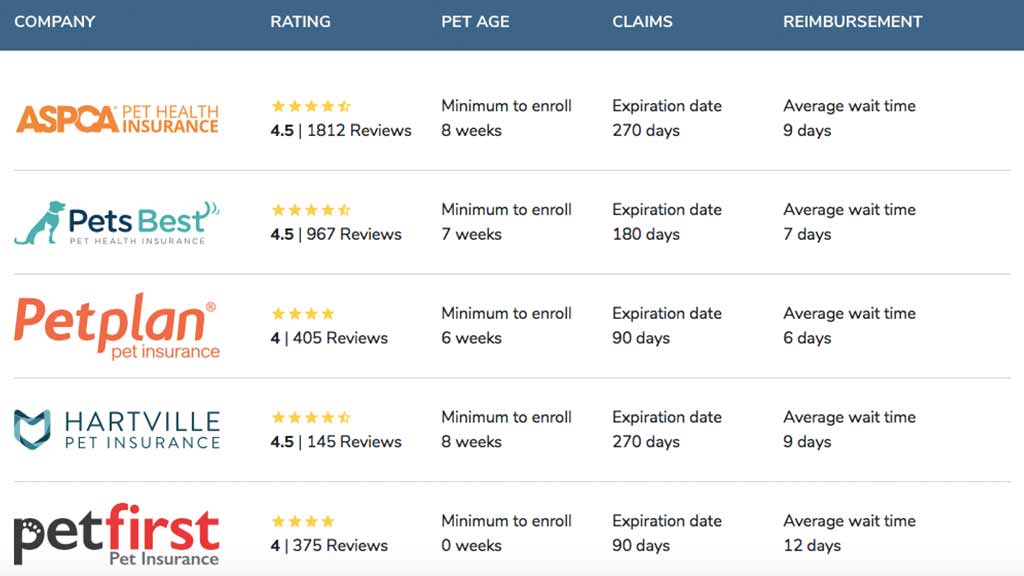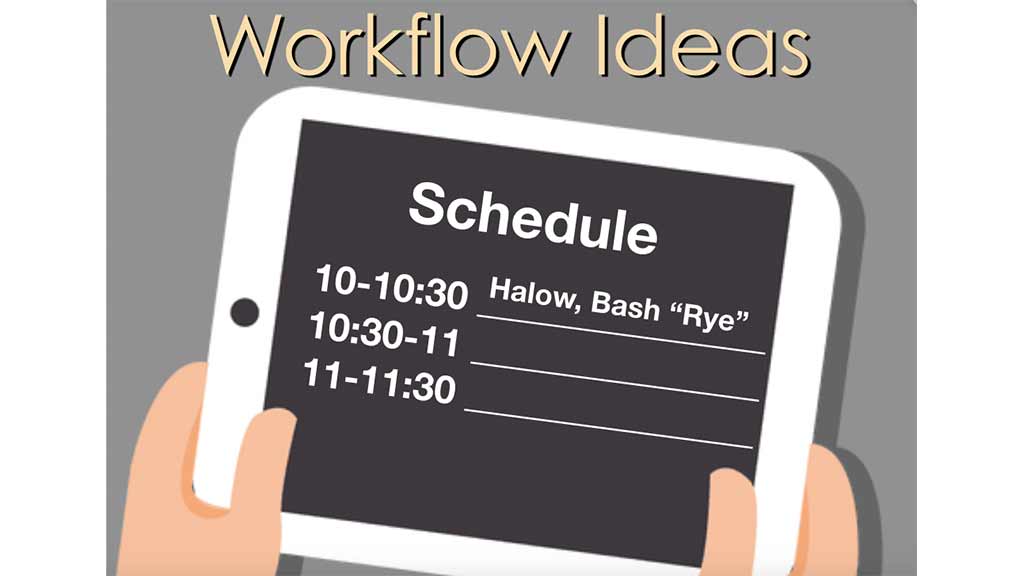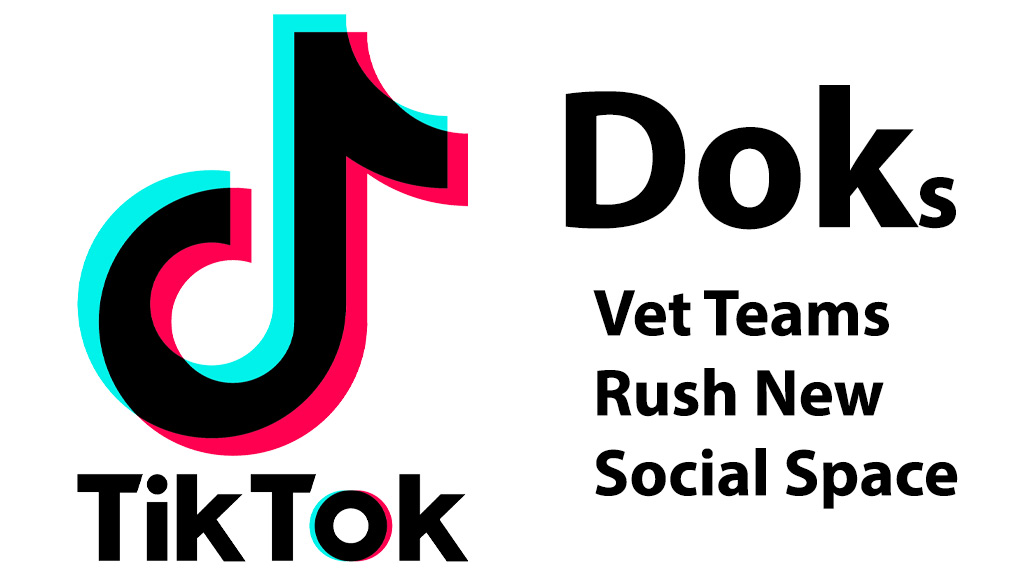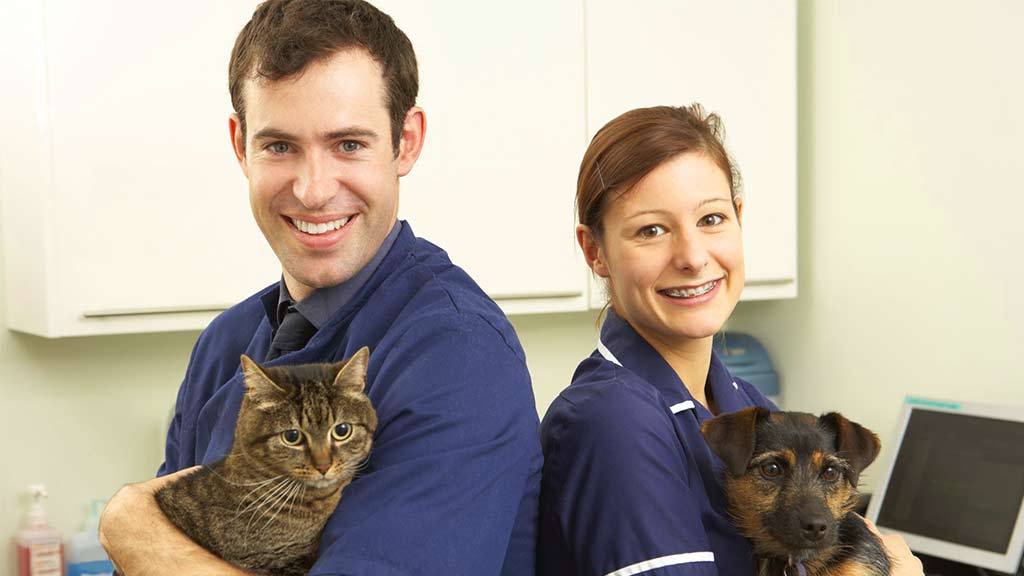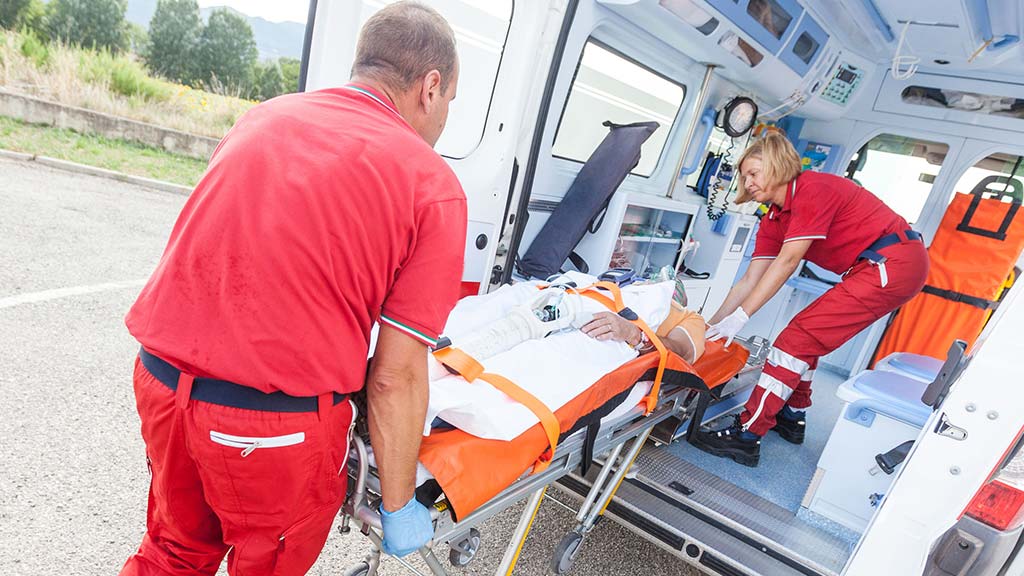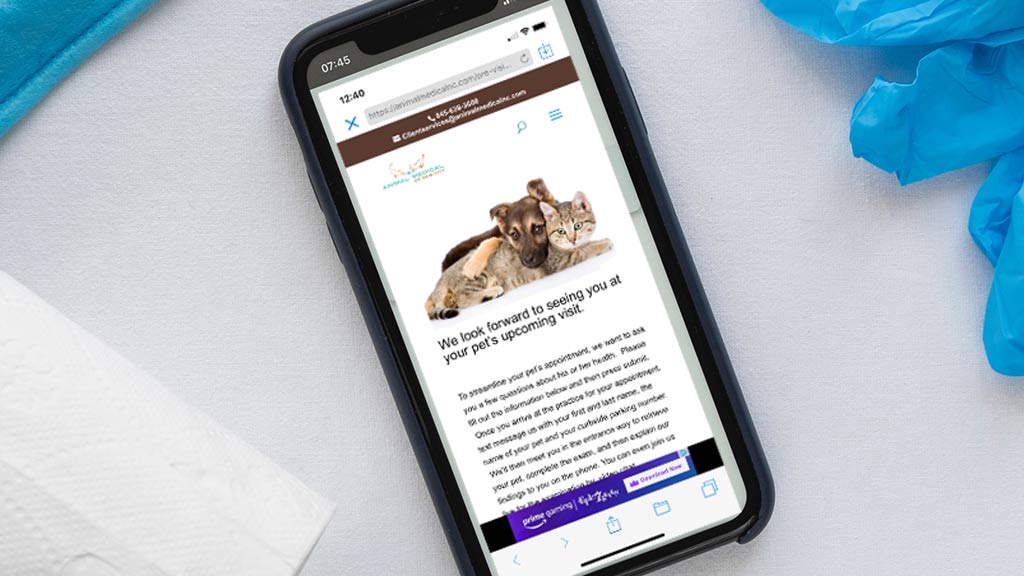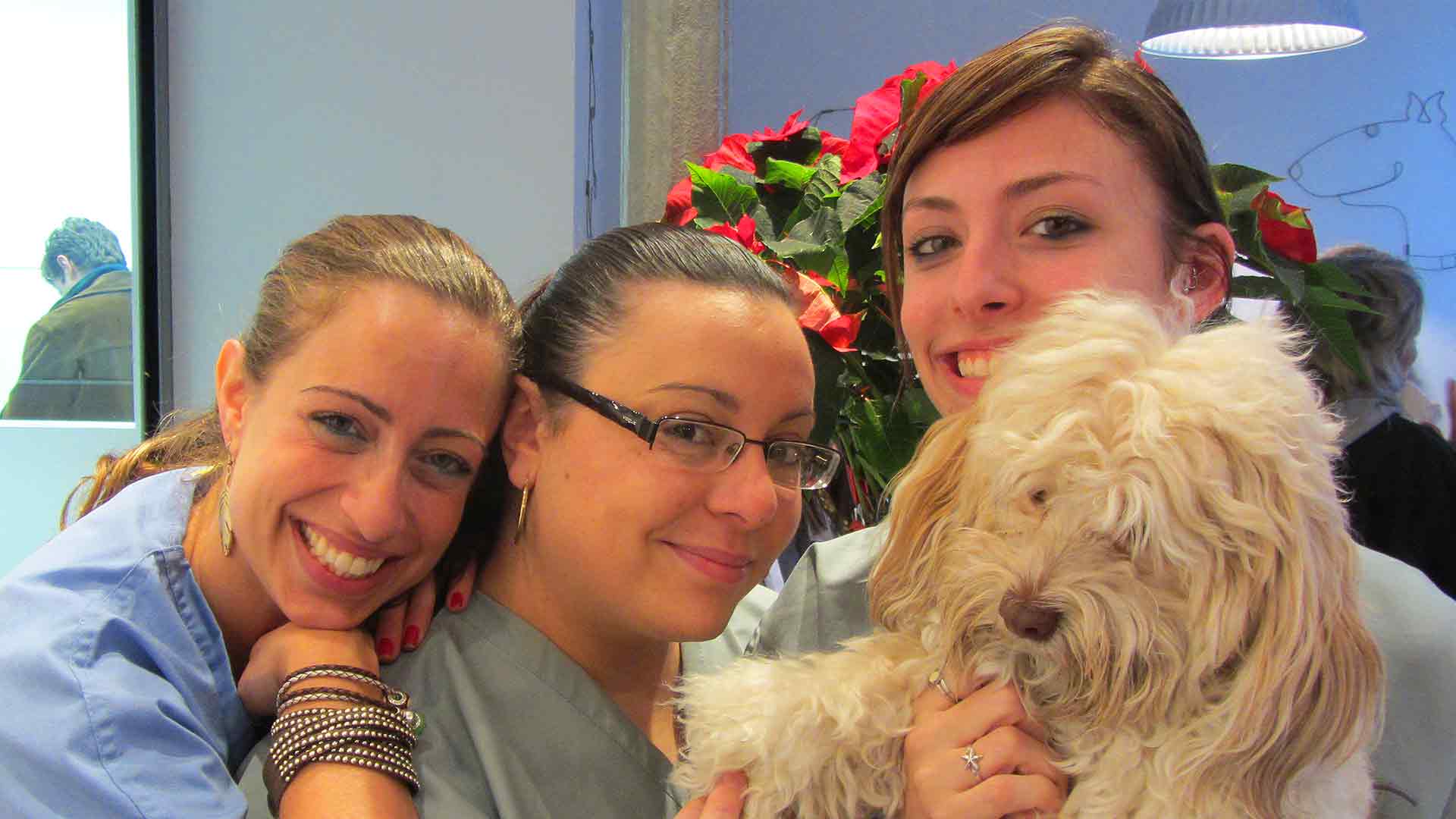Based on the latest (May 4th, 2020) guidelines by the CDC and OSHA, here is a plan to return your veterinary practice to normal, safe operations this month.
Because policies differ state-to-state, providing absolutes is hard, but not impossible. Here are the safety considerations that you should definitely consider when trying to return your practice to ‘normal’ operations in May and the months to come.
Contents
-
CDC’s Latest Guidance For Veterinary Practices
-
Areas of Oversight
-
OSHA’s Four Areas of Control
-
OSHA’s Levels of Risk Based on Job and Exposure
-
OSHA’s Recommendations For Medium Exposure Businesses
-
COVID-19 Safety Policy For Veterinary Practices
-
Resources
Introduction
It is our duty under the Occupational Safety and Health Act’s (OSHA’s) General Duty Clause to minimize our employees’ risk to COVID-19 infection as well as exposure to other harmful pathogens. The instructions that follow are guidelines that all veterinary practice leaders should consider based on OSHA and the CDC’s directions for small businesses reopening post COVID-19. It’s important to note that in response to COVID-19, OSHA has not added new standards, only guidance to assist businesses to remain in compliance with the General Duty Clause.
SARS-CoV-2 is the virus that causes COVID-19 disease in humans. While the term COVID-19 has not been used to refer to animal infections, some animals have tested positive for the virus. For the purposes of this article, COVID-19 will apply to human infections, and SARS-CoV-2 infection will apply to animal infections.
CDC’s Latest Guidance Specific to Veterinary Practices
On May 1st the CDC released Interim guidelines specific to “veterinarians and their staff who may be treating or advising on companion animal medical care during the COVID-19 pandemic”.
The guidance is designed to, “clarify PPE recommendations based on situational risk factors and guidance for returning to normal clinic practices.”
The guidance can be organized into three areas
-
- The Latest information on animals and COVID-19
- What is currently known about COVID-19 and animals (In the context of animal health, the CDC refers to COVID-19 as SARS-CoV-2.)
- Screening pets for exposure
- Clinical Signs of SARS-CoV-2 in animals
- Evaluating and testing animals for SARS-CoV-2
- Recommendations for animals testing positive for SARS-CoV-2
- Interim facility and work protocol controls
- Managing contact with pet owners who are confirmed COVID-19+ or may have had exposure to the virus.
- Personal protective equipment recommendations based on risk and patient history
- Cleaning and disinfection protocols
- Interim administrative controls
- General administrative recommendations regarding sick leave
- Administrative recommendation for scheduling patients
- Identifying employees at higher risk of infection with COVID-19
- Client communication
- The Latest information on animals and COVID-19
$1000.00
$1000.00 referral fee for veterinarian applicants. Sign on bonuses also available. More.
Safety Is Specific To The Job Site, The Team, and The Employee
OSHA charges us with the responsibility of identifying workplace hazards and mitigating them through engineering, administrative, work protocols, and personal protective equipment controls. But every workplace is unique. Read the recommendations below, talk them through as a leadership team, and then bring the discussion to all of your employees so that you can agree on the safety practices that will work best for your business and each of your medical professionals.
Two Areas of Safety Management
Generally, OSHA and the CDC advise business owners to manage COVID-19 workplace safety in two ways:
-
-
- Education: Minimize employees’ exposure to COVID-19+ coworkers, educate all workers about the risks of COVID-19 infection, and develop non-punitive leave policies that encourage team members to stay at home if they are not well.
- Control Measures: Implement workplace safety controls that focus on four areas:
- Engineering Controls: Ask yourself what you can physically alter about your plant, like installing sneeze guards, to keep team members safe.
- Administrative Controls: Have your leadership team devise ways to schedule employees, alter sick leave, train team members, or make other changes to your workplace’s administration policies so that you lower risk.
- Safe Workplace Protocols: Review your day-to-day work protocols, identify areas where employee safety is at risk, and put mitigation practices in place.
- Personal Protective Equipment.
-
Four Levels of Risk Based On Job and Public Contact
OSHA has also identified four levels of COVID-19 risk based on the job employees are expected to do and their potential exposure to the virus. The exposure risk levels are Low, Medium, High, and Very High. According to OSHA, veterinary teams fall into the Medium exposure risk category defined as:
Jobs that require frequent/close contact with people who may be infected, but who are not known to have or suspected of having COVID-19. Workers in this category include:
-
-
-
- Those who may have frequent contact with travelers who return from international locations with widespread COVID-19 transmission.
- Those who may have contact with the general public (e.g., in schools, high population density work environments, and some high-volume retail settings)
-
-
It’s important to note that while OSHA makes no specific citation to veterinary practices in its risk categories, the CDC in its May 1st Interim Infection Prevention and Control Guidance for Veterinary Clinics states, “Veterinary facilities have unique characteristics that warrant unique infection control considerations.”
These considerations have been included in this proposed plan.
OSHA Recommendations for Medium Exposure Workplaces
OSHA offers the following safety recommendations for Medium exposure risk workplaces:
Engineering Controls
-
-
-
- Install physical barriers such as clear plastic sneeze guards where feasible.
-
-
Administrative Controls
-
-
-
- Consider offering facemasks to ill employees and customers to contain respiratory secretions until they are able leave the workplace.
- Keep customers informed about symptoms of COVID-19 and ask sick customers to minimize contact with workers until healthy again.
- Where appropriate, limit customers and the public’s access to the worksite, or restrict access to only certain workplace areas.
- Consider strategies to minimize face-to-face contact (e.g., drive- through windows, phone-based communication, telework).
- Communicate the availability of medical screening or other worker health resources.
-
-
Safe Workplace Protocols
-
-
-
- Implement an Infection Disease Preparedness Plan.
- Implement good hygiene and infection control practices, including:
- Promote frequent and thorough hand washing, including providing workers, customers, and worksite visitors with a place to wash their hands.
- Encourage workers to stay home if they are sick.
- Encourage respiratory etiquette, including covering coughs and sneezes.
- Provide customers and the public with tissues and hands-free trash receptacles.
- Employers should explore whether they can establish policies and practices, such as flexible worksites (e.g., telecommuting) and flexible work hours (e.g., staggered shifts), to increase the physical distance among employees and between employees and others if state and local health authorities recommend the use of social distancing strategies.
- Discourage workers from using other workers’ phones, desks, offices, or other work tools and equipment, when possible.
- Maintain regular housekeeping practices, including routine cleaning and disinfecting of surfaces, equipment, and other elements of the work environment.
-
-
Personal Protective Equipment (PPE)
-
-
-
- When selecting PPE, consider factors such as function, fit, decontamination ability, disposal, and cost. Each employer should select the combination of PPE that protects workers specific to his or her workplace.
- Workers with Medium exposure risk may need to wear some combination of gloves, a gown, a facemask, and/or a face shield or goggles.
- PPE ensembles for workers in the Medium exposure risk category will vary by work task; the results of the employer’s hazard assessment, and the types of exposures workers have on the job.
-
-
Veterinary Practice Safety Recommendations for OSHA Compliance
Bash Halow of Halow Consulting has reviewed the OSHA and CDC guidelines (as of May 4th, 2020) on reopening your business post COVID-19, and has agreed to share his thoughts on a COVID-19 Safety Plan for your veterinary hospital. Review these ideas as a group, and then add to the list as needed to accommodate the safety of your specific team.
First Steps
-
-
- Visit your state’s health department website for more local information regarding COVID-19 preparedness.
-
-
-
- Assign someone to be the official coordinator of your COVID-19 safety plan. This can be your existing in-house OSHA officer or someone that works with your existing OSHA officer. If you feel that your attention to general OSHA compliance has heretofore been lax, use this lull in business to get back on track. OSHA wants to make a positive impact on your business, not be a source of fear and fines! Use the resources listed at the end of this document to get started on creating a safe workplace and acquiring the team pride that comes with it.
-
Devise an Infectious Disease Plan. This plan should include:
-
-
- Regular training on health safety for your team, not just for COVID-19, but all infectious disease
- How team members can protect themselves from COVID-19, in and out of the workplace
- What team members should do if they feel sick
- The risks of travel to areas that have higher rates of COVID-19 infection
- Ways to limit aerosolized particles when sneezing or coughing
- How to sensitively provide clients guidance on how to behave hygienically in the workplace
- How your business will use available testing or temperature taking to assist with managing COVID-19 safety concerns
- How to interact with clients that have tested positive for COVID-19 or who are expected to have been exposed
- How to safety handle and treat patients that have been in close contact with pet owners that may have been exposed to or are positive for COVID-19
- Procedures to identify, isolate, and safely manage positive or suspected SARS-CoV-2 patients inside your facility
- If applicable, how to safely provide house call service
-
Organize Workplace Safety Ideas Into Four Areas of Control
Review the following list of recommendations, and then organize any additional ideas for protection according to OSHA’s four categories of control: engineering, administrative, workplace habits, and personal protective equipment.
As of May 4th, the CDC continues to promote the use of ‘curbside care’ as one way of limiting your team’s contact with the public. The following recommendations assume that your locality allows for less restrictive social distancing and that relaxing such measures is the right choice for your business and your team.
Engineering
-
-
- Install a portable sneeze guard that your client service employees can move around the desk as needed to create a barrier between themselves and a client. Having a portable barrier won’t be as restrictive as a permanent barrier and you’ll be able to put it up or take it down as risk levels change. You can find these for purchase, or instructions to build one, online.
-
-
-
- Consider marking your practice floor to help clients understand the direction of flow when they enter. Explore paint options as opposed to tape since tape can trap fomites and not be as easy to disinfect.
-
-
-
- Install a hanging, removable sneeze guard in at least one exam room. The guard can be as simple as a square piece of Plexiglas with two holes at the top to attach to support wires or cords. Your team members can put it up or take it down as needed if this makes them more comfortable interacting with a client or if a client has ongoing social distancing concerns. You can find hanging sneeze guards for purchase, or instructions to make one, online.
-
-
-
- Identify porous materials such as furniture upholstery and foam table guards that may be difficult to disinfect. Consider removing these items temporarily or permanently.
-
-
-
- Identify a room or rooms that will only be used for COVID-19 clients or SARS-CoV-2 patients and adjust them structurally to mitigate the risk of infection. Alternatively, devise other ways for how such individuals can be managed safely.
-
Administrative
-
-
- Ensure all team members understand how to safely conduct themselves at work and at home so that they minimize the risk of bringing COVID-19 infection to work. Educate team members about risk based on age, weight, preexisting conditions, etc. and adjust your safety plans to accommodate for their needs.
-
-
-
- Train team members to identify symptoms in companion animals that may be compatible with infection by SARS-CoV-2 and devise an appropriate safety plan to manage such cases.
-
-
-
- Review your practice’s sick leave policy based on the recommendations by the Society for Human Resource Management (SHRM). Meet as a team, hand out copies of the changes to your sick leave policy, review the changes, and have your team acknowledge in writing that they have been apprised of the changes.
-
-
-
- Write guidelines about the changes to your workflow or the safety practices that you have implemented that you want your clients to know about and put this on your website, send it out as part of their appointment reminder, or put it on your on-hold message. These recommendations might include telling clients to sanitize their hands after entering your practice, to be responsibly hygienic when they sneeze or cough, to reschedule their appointment if they are not feeling well, to request PPE if they feel they need it, require them to wear a mask, etc.
-
-
-
- Develop a pre-visit screening tool that identifies pet owners or pets that may have had exposure to COVID-19 or who have tested positive for the virus so that the practice can take the necessary precautions when seeing the pet owner and pet. This can be part of the patient’s texted, mailed, or emailed service reminders, or part of the dialogue that your CSR’s have with clients when confirming appointments.
-
-
-
- Review the CDC’s recommendations for client communication during the COVID-19 outbreak.
-
-
-
- As of May 4th 2020, the CDC advises that ‘to protect staff and preserve personal protective equipment and supplies’, we should, ‘prioritize urgent and emergency visits and procedures until regular business operations resume in your community’. When deciding upon the specifics of this advisement for your business, evaluate the position of your county and state as to when you can return to regular business hours, the availability of PPE and supplies, and the safety of your team.
-
Safe Workplace Protocols
At Reception
-
-
-
- Provide Rescue wipes at the entrance to the practice with a sign instructing clients to wipe their hands upon entering, but note that the CDC recommends an alcohol-based product for hand sanitizing. Provide a hands-free waste can nearby in which to place the used wipe.
-
-
-
-
-
- Use positive, considerate language on signage. Instead of leading with words like STOP or NO, try For Your Protection, or To Keep You Safe.
-
-
-
-
-
- As a team, work on branding a new, non-physical way of showing affection and appreciation and verbalize it to owners. For example, “In light of everyone’s ongoing concerns about corona, we have a new way of expressing how happy we are to see you. Welcome!” And then put your hand on your heart, give a thumbs-up sign, or do some other agreed-upon gesture. (Sound corny? Remember that 1960’s protesters changed the meaning of the two-fingered ‘V’ sign, that once stood for ‘victory’, to mean ‘peace’. The sign’s new meaning is now understood globally.)
-
-
-
-
-
- To make clients more comfortable, provide paper towels and bottles of Rescue spray with a sign instructing clients that they can use the product to wipe down a lobby chair before sitting on it, but keep in mind that clients may not understand protocols for contact time. Alternatively, have your CSR team alert clients that the chairs have been disinfected for their safety and protection.
-
-
-
-
-
- Ask the client if he or she would like PPE during the visit.
-
-
-
-
-
- Consider direct-to-exam-room care to limit time clients may have to sit together in your waiting area.
-
-
In The Exam Room
-
-
-
- Replace the filters in the air vents in the exam rooms and ensure good air circulation.
-
-
-
-
-
- If you feel more safe wearing a mask for the next few weeks or months, consider lowering it before you approach a client and while you are still at a safe distance. Use this opportunity to smile and demonstrate your happiness to see both the person and the pet. Showing your face may also quiet pets that are fearful of seeing people in masks (Be advised that as of May 4th and that despite some state rulings on the matter, the CDC still recommends that all people entering a veterinary hospital should wear a cloth covering over their noses and mouths.)
-
-
-
-
-
- When leading clients into and out of rooms, open and close the door for them so that they don’t have to touch the handle.
-
-
-
-
-
- At the outset of the exam, mention that you would like to be considerate of the client’s social distancing needs. Alternatively, explain your needs and then agree to what safety practices you would like to implement.
-
-
-
-
-
- At the end of every appointment, use Rescue to clean:
-
-
-
-
-
-
- Exam table
- Exam table base
- Counter
- Keyboard
- Phone receiver if used
- Any medical equipment used
- Floor
-
-
-
-
-
-
- Train your team using Rescue’s Infection Prevention Program and ensure that they are disinfecting surfaces effectively.
-
-
-
-
-
- Consider implementing a flagging system outside exam rooms that alerts team members whether a room has been disinfected or not.
-
-
At Checkout
-
-
-
- Consider scheduling the patient’s next appointment, reviewing all medications, and checking clients out in the exam room. This will improve efficiency, increase client compliance, and limit contact with other clients in the lobby.
-
-
-
-
-
- If checking clients out at the desk, use a mobile sneeze guard as needed.
-
-
-
-
-
- Have a penholder at the desk that alerts clients that the pens therein have been disinfected.
-
-
-
-
-
- Have a sign on CCR machine or pin device alerting clients that it has been disinfected.
-
-
-
-
-
- When through, wipe down all products touched by the client.
-
-
General
-
-
-
- Use this opportunity to explore how telehealth platforms can both reduce your team’s exposure to people and improve the client experience by taking it online.
- Use the Rescue website’s Infection Prevention Program to train your team members on the basics of how to correctly disinfect a veterinary medical space.
-
-
-
-
-
- Use the Build Your Own Disinfection Protocol tool on the Virox website to match the right disinfectant to the area of the hospital you want to keep clean.
-
-
-
-
-
- Stagger lunch breaks or put visuals like colored tape on tabletops that remind employees about social distance.
-
-
-
-
-
- Consider working in small groups that remain together for the day. It will limit interpersonal contact and improve efficiency.
-
-
-
-
-
- Stick to one workstation as best you can and try not to overlap with other team members at workstations.
-
-
-
-
-
- Review your existing back-of-house infectious disease protocols and adjust them as needed to accommodate for risk of COVID-19 infection.
-
-
-
-
-
- Discuss a schedule to ‘Rescue’ the following surfaces throughout the day:
-
-
-
-
-
-
- Tables,
- Doorknobs,
- Light switches,
- Countertops,
- Handles,
- Desks,
- Phones,
- Keyboards,
- Toilets,
- Faucets and sinks,
- Touch screens, and
- ATM machines
- Non-critical medical equipment like the otoscope, stethoscope, etc.
-
-
-
Personal Protective Equipment (PPE)
-
-
-
- In its interim guidelines for veterinary practices, the CDC advises that, ‘Everyone entering the clinic… should wear a cloth face covering over their nose and mouth to contain respiratory secretions…’
- Take note of your state’s PPE availability and as a group, consider changes to the way you use or reuse PPE to optimize and conserve supplies.
- Even if your state or county has more relaxed PPE restrictions, have facemask and gloves available to employees and clients as needed.
- Discuss as a team the necessity of additional PPE based on risk and safety concerns.
-
-
As of May 4th, the CDC has made the following recommendations for PPE based on risk. Please keep in mind that nearly all of these recommendations are more extensively qualified in their recently published guidance.
| Patient History | Recommended Personal Protective Equipment | ||||
| Facemask | Face shield | Gloves | Gowns | N95 Resp. | |
| Healthy, no COVID-19 exposure | No | No | No | No | No |
| Ill, but no exposure and no SARS-CoV-2 symptoms | No | No | No | No | No |
| Exposure, but asymptomatic | Yes | No | Yes | No | No |
| Possible infection with SARS-CoV-2 | Yes | Yes | Yes | Yes | No |
| Any procedure that generates aerosolized particulates, but patient has no exposure | Yes | Yes | Yes | Yes | No |
| Aerosolized particulates and patient has exposure | No | Yes | Yes | Yes | Yes |
| Any procedure where pet owner, suspected or confirmed to have COVID-19 will be present | No | Yes | Yes | Yes | Yes |
Resources
CDC Interim Infection Prevention and Control Guidance: Though this protocol includes all the recommendations made by the CDC’s May 1st Guidance, use this link to see the full text and learn more about the specifics of testing animals for SARS-CoV-2.
Infectious Disease Preparedness and Response Plan: OSHA recommends that businesses limit the risk of COVID-19 infection at work and have a plan in place should a team member become exposed or test positive for COVID-19. View recommendations here.
Proper Way To Disinfect A Veterinary Space: Virox has put together an excellent, one-sheet that teaches veterinary employees how to properly disinfect a surface. This should be required reading for all employees.
Build Your Own Disinfection Protocol: Rescue has a great tool that helps you match the right disinfectant to the part of the hospital you want to keep clean. You’ll get a print out of your plan when you are finished that will streamline your team training efforts.
CDC Plan For Opening After COVID-19: A quick, one-sheet-look at the major considerations for all businesses operating in a post-COVID-19 world.
Respiratory Etiquette: The CDC teaches employees how to appropriately cover sneezes and coughs.
OSHA classification for COVID-19 Workplace Risk: OSHA has a COVID-19 risk-scale for businesses. View it here.
CDC Cleaning Guidelines: A comprehensive CDC advisement on workplace disinfection.
Sick Leave Policy Template: The Society for Human Resource Management (SHRM) has rigorously reviewed the COVID-19 changes made to the Family Medical Leave Act. Start here when exploring the changes that you should implement at your practice.
OSHA Compliance Assistance: OSHA provides free compliance assistance to employers. Don’t be afraid, these folks are here to help!
Find Your State Health Department: Use this link to search for health departments by state.
Animal Health Officials by State: Uncertain of what a veterinary practice in your state should be doing? Use this link.
Link To All U.S. Govt. COVID-19 Responses: This link is an extremely comprehensive portal to many government resources related to COVID-19. It includes health and safety, grants, loans, housing, and much more
Additional Reading
New To Halow Consulting?
Let’s Get Started

